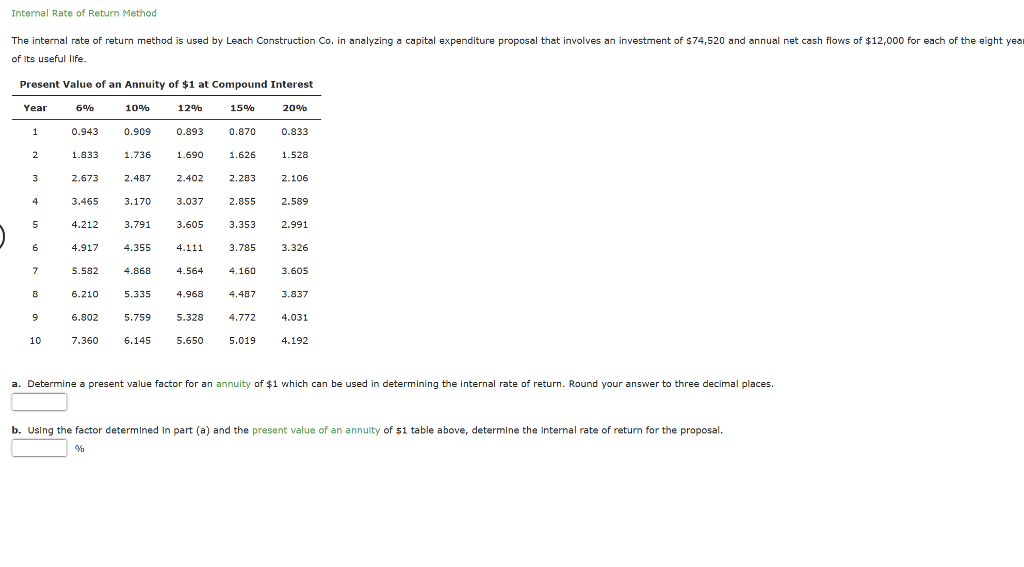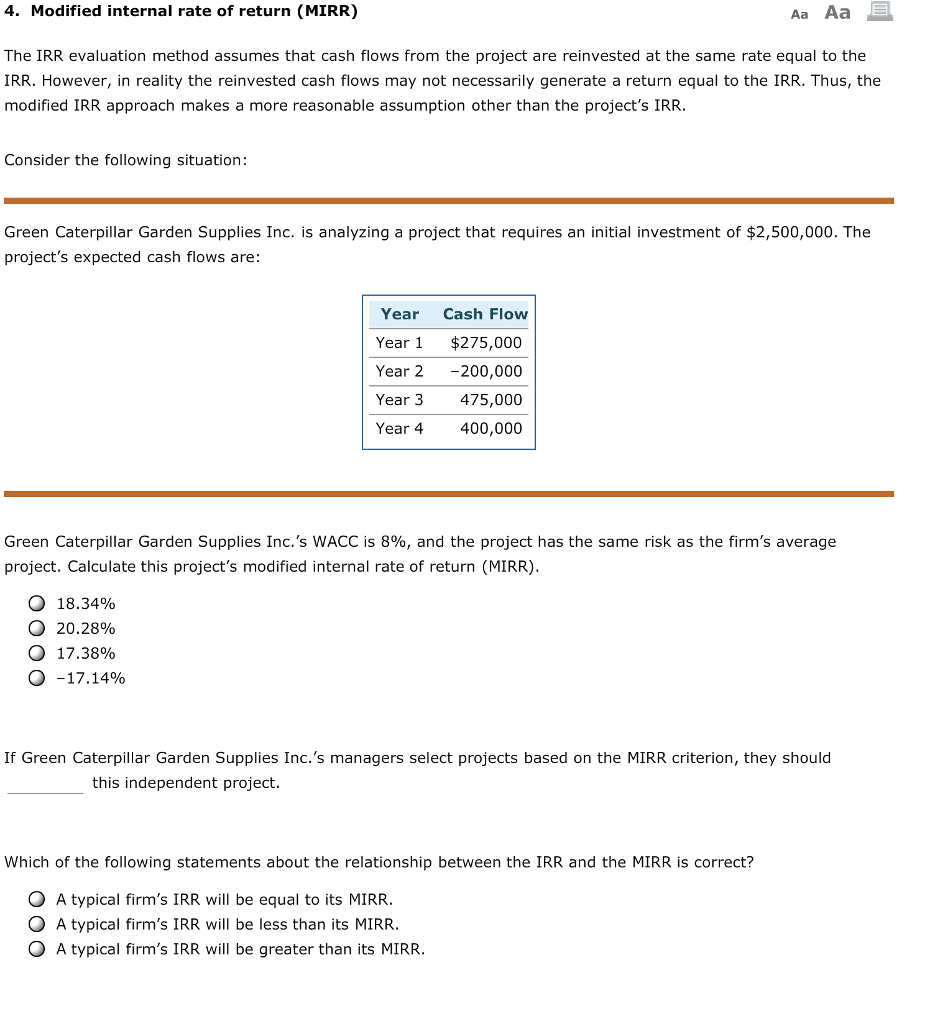
In reality, an investment does not usually have the same rate of return each year. Generally, the actual rate of return that a given investment ends up generating will differ from its estimated IRR. To do this, the firm estimates the future cash flows of the project and discounts them into present value amounts moving expenses using a discount rate that represents the project’s cost of capital and its risk. Next, all of the investment’s future positive cash flows are reduced into one present value number. Subtracting this number from the initial cash outlay required for the investment provides the net present value of the investment.
Which of these is most important for your financial advisor to have?
However, we’ll be looking at how the company will borrow money to plow back into the investment (negative cash flows) at a rate different from the rate of reinvesting part of the positive cash flow. When the sign of the cash flows changes more than once, for example when positive cash flows are followed by negative ones and then by positive ones (+ + − − − +), the IRR may have multiple real values. In a series of cash flows like (−10, 21, −11), one initially invests money, so a high rate of return is best, but then receives more than one possesses, so then one owes money, so now a low rate of return is best. In this case, it is not even clear whether a high or a low IRR is better. One downside of the IRR rule is that it assumes future positive cash flows can be invested at the same rate of return.
Internal Rate of Return (IRR) Rule: Definition, Formula & Example
The IRR rule is a guideline for deciding whether to proceed with a project or investment, on a financial basis. Mathematically, IRR is the rate that would result in the net present value of future cash flows equaling exactly zero. You’ll then need the number of years you plan to hold the investment (N), as well as your expected cash inflows and outflows for those periods (CF1, CF2, etc.). IRR is used to calculate the potential annual returns of an investment over time, while taking into account cash flow — the money coming in and out. It’s often used to determine where a company’s funds are best directed.
- The IRR itself is only a single estimated figure that provides an annual return value based on estimates.
- When the sign of the cash flows changes more than once, for example when positive cash flows are followed by negative ones and then by positive ones (+ + − − − +), the IRR may have multiple real values.
- They measure the viability of investment and projects made by a business.
- In reality, an investment does not usually have the same rate of return each year.
- When the IRR has only one value, this criterion becomes more attractive when comparing the profitability of different investments.
How to calculate IRR on Excel
By conventional, we mean a stream that has one initial outflow (the initial investment), followed by a stream of inflows (the cash inflows from Year 1 – Year 5). Notice the graph above… As long as the firm’s / project’s cost of capital (discount rate (“r”)) is lower than the Internal Rate of Return, it’s earning a positive NPV. However, in comparing several potential projects a company might choose one with a lower IRR as long as it still exceeds the cost of capital. That can be because it has other benefits beyond the purely financial ones. The IRR doesn’t take the actual dollar value of the project or any anomalies in cash flows into account. If there are any irregular or uncommon forms of cash flow, the rule shouldn’t be applied.
Thus, you can see that the usefulness of the IRR measurement lies in its ability to represent any investment opportunity’s possible return and compare it with other alternative investments. In capital planning, a typical use of IRR is to compare the profitability of establishing new operations versus expanding existing ones. For instance, a company might use IRR to decide whether to open a new retail outlet or to renovate and expand an existing one. While both could add value to the company, IRR can help determine which option is more worthwhile. Study guide references E3(g), (h) and (i) refer explicitly to the Internal Rate of Return (IRR). In short, IRR can be examined in both a written or calculation format, within either section A or section B of the exam.
What is IRR?
Investors typically select projects with an IRR that is greater than the cost of capital. However, selecting projects based on maximizing the IRR instead of the NPV could result in worse financial results. As the cash inflows for the project are an annuity, there is actually a short cut that we can take for the calculation. A project has an immediate cash outflow of $7,000, and then cash inflows of $4,000 in years 1 and 2.

IRR is an important tool for companies in determining where to invest their capital. These include building out new operations, improving existing operations, making acquisitions, and so on. IRR can help determine which option to choose by showing which will have the best return.
Conversely, if the IRR on a project or investment is lower than the cost of capital, then the best course of action may be to reject it. Overall, while there are some limitations to IRR, it is an industry standard for analyzing capital budgeting projects. Within its realm of uses, IRR is a very popular metric for estimating a project’s annual return; however, it is not necessarily intended to be used alone. IRR is typically a relatively high value, which allows it to arrive at an NPV of zero.
IRR is most often used in conjunction with hurdle rate — or the minimum return an investment needs to bring in. Many companies use their weighted average cost of capital (WACC) as their base hurdle rate. The internal rate of return (IRR) is a metric used to estimate the return on an investment.
The Internal Rate of Return (IRR) is a fundamental tool in the world of finance, used to evaluate the viability and profitability of investment projects. It is an essential metric for investors, companies and finance professionals, as it provides critical insight into the profitability of a project over time. In this article, we will explore in detail what IRR is, what it is for, what its calculation formula is like and how we can calculate it easily using Microsoft Excel/Spreadsheets. If the internal rate of return is high, it means the investment opportunity is better than other options. However, the amount of initial investment, hurdle rate, and period of achieving the break-even point is equally significant.

